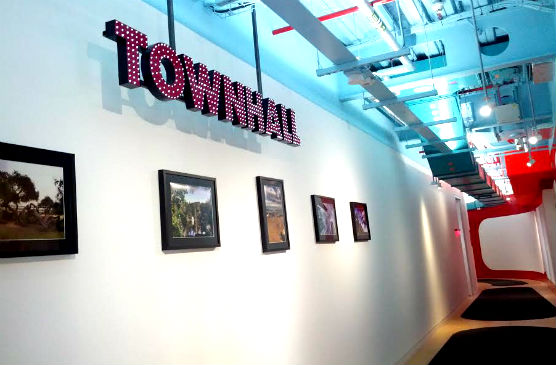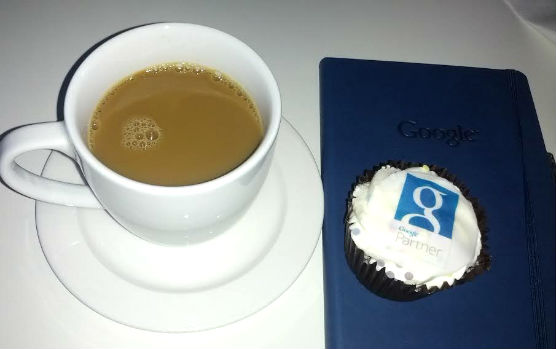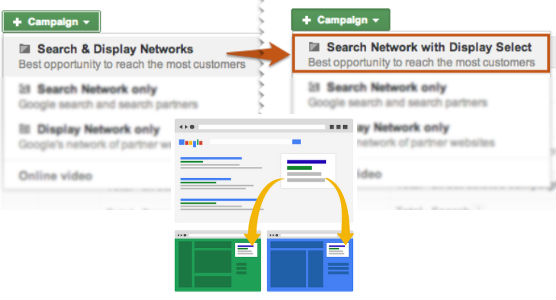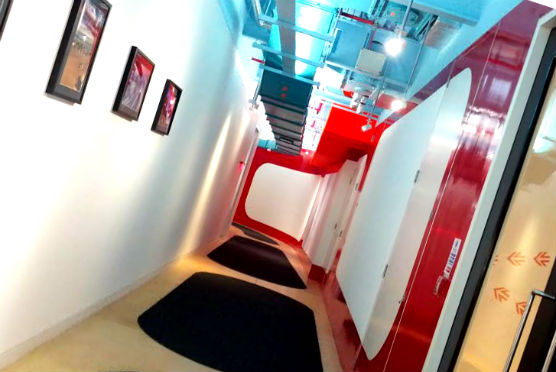
Myself and Hayley, the Silkstream Search Team, were invited to the Optimise & Grow agency workshop at Google’s London HQ on Tuesday 2nd September 2014. A number of excited agency representatives and Google Partners were ushered into Google’s Town Hall where the workshop took place.
Optimise & Grow Registration (11:00 – 11:30)

We eagerly sat down to tea, coffee and cupcakes. On our seats were complimentary Google goody bags, containing a rather lovely Google notebook, Google pen, and a Google Partners mobile phone holder and screen cleaner. The pen and notebook came in very handy throughout the day!
Welcome (11:30 – 12:00)
Once we had all settled down with a nice tea or coffee, we were welcomed by Michelle Flaherty and Helene Ambiana who introduced us to the topics their Google Adwords experts would be discussing throughout the workshop.
Mobile Solutions (12:00 – 13:00)
The Adwords’ Mobile Solutions talk was held by Philip Shearer, an SMB agency strategist for Google’s European headquarters based in Dublin.
Philip Shearer discussed the importance of Adwords for mobile, and how a mobile-optimised web design is crucial to the success of a Mobile Adwords campaign. He tested our mobile solutions skills with some examples of homepages viewed in a desktop browser, and asked members of the audience how they would structure them for a mobile design.
Did you know that 57% of users won’t recommend a poorly designed mobile site?
A poor mobile user experience can drastically affect your conversion rate. He explained to us a simple component of mobile user testing called the “Rule of Thumb” whereby you can just see whether everything onsite is “tappable” by thumbs alone. As well as physical functionality, a good mobile web design will also simplify the choice in options, providing less or making the website’s navigation more in tune to the browsing intent of the mobile user.
As for the Mobile Adwords side of things, Philip Shearer showed us the significance of analysing mobile goals and conversions separately to the desktop ones. Users browsing from a mobile tend to have a different intent in browsing. For example, someone searching from home will be more likely to click on an ad for food delivery, whereas someone browsing from mobile close by to the food joint will be more likely to click on an ad offering a takeaway discount if they come in to collect.
Mobile ads can utilise a number of different Adwords extensions (such as location extensions, call extensions and mobile preferred site links) to really deliver a customised message to mobile users. And when it comes to mobile devices, you really want to be targeting the top 2 ad positions if you want to be seen at all…
Mobile relevant ads will also need to direct to a mobile optimised landing page. May seem obvious, but this is where a mobile optimised website plays its part – reiterating the importance of mobile optimisation for web design. Thanks to HTML5, web apps are now able to do a lot of things that native apps can do. Dynamically serving mobile-optimised content through adaptive web design, “Click To Call” buttons right there on your website, offline reading, recognising different swiping gestures… And more!
You can check out your estimated cross-device conversions to see if mobile plays a big part in the “first touches” but the “last touch” (i.e. the action that defines the conversion) is performed on the user’s desktop. Though they may have converted on a desktop device, they may never have gotten there without the mobile interactions.
You can also see how much you’re losing out on mobile ad impressions by segmenting your Adwords reports by device and checking out the lost impression share (Lost IS).
Lunch ‘n’ Learn (13:00 – 14:00)
A very enticing buffet was laid out for lunch – sandwiches, sushi, crisps, cakes and pastries. And, of course, even more Google cupcakes. The Lunch ‘n’ Learn was optional, but who could resist listening in on another educational workshop as we enthusiastically munched away, catching the crumbs with our bread plates.
The Lunch ‘n’ Learn workshop was held by Graham Barry, a products solution specialist at Google, who covered Google Shopping and SNDS (Search Network with Display Select) migration.

Remarketing – Strategies for Success (14:00 – 15:30)
Philip Shearer from the Mobile Solutions workshop earlier that morning was back immediately after the lunch break for the next Google Partners workshop on Remarketing.
We were first showed some astounding statistics on how 96% of users leave without converting, and 70% of users will abandon their shopping cart. Philip Shearer showed us how a great remarketing strategy can help our businesses reconnect with our lost users who, without our remarketing, may choose to make the final purchase elsewhere. Remarketing is a great way to increase our conversions!
We can use our website’s Google Analytics to find specific audiences to target our remarketing campaigns at, and create our custom lists accordingly. Perhaps those who spent a lot of time viewing and interacting with a certain page or category of pages, or those who put items into their shopping basket.
Clarks saw their online conversion rate increase from 0.6% to 4% thanks to their remarketing strategy!
Philip Shearer showed us search funnel statistics and how long some users actually take to convert, which we should already know about our own clients through our Google Analytics.
With remarketing on Search, we can target generic (but relevant) keywords, as we have more of an insight as to the buyer’s inferred intent based on their browsing history and can bid more aggressively for previous site visitors. We can use Dynamic Remarketing to display to the user of an item that they previously held in their Shopping Basket on the website, so that the item they’re interested in stays at the forefront of their mind during the Decision Stage of their Buyer’s Journey.
We were also reminded about frequency capping! ;)
Philip Shearer discussed the benefits of eCPC (Enhanced Cost-per-Click), and how it’s most effective after many conversions, as it has more data to go by. But eCPC will be discussed in further depth during the next workshop on the best practices of tracking and automated bidding in Adwords.
Tracking and Automated Bidding – Best Practice (15:30 – 16:30)
The final workshop of the day, “Tracking and Automated Bidding – Best Practice”, was held by Graham Barry who also held the Lunch ‘n’ Learn portion of the day. I don’t know whether it’s because it was the last workshop of the day, but this one seemed a bit heavier than the others.
Graham Barry introduced the workshop by listing the many advantages of using eCPC (enhanced cost-per-click): increasing profits by spending more money on clicks that are more likely to convert and saving on clicks that most likely won’t through bid adjustment calculations based on your account’s conversion history. So eCPC becomes more accurate in its calculations the more conversions it is able to analyse. eCPC allows for safe testing as you will either convert more for the same cost or your conversion rate will stay the same. However, someone in the audience during the Q&A at the end of the workshop told Graham that he hasn’t always seen this to be the case, and in fact had to disable eCPC after a couple of weeks after his conversion rate plummeted. To which Graham Barry was eager to speak to him after the workshop in regards to this, as it is absolutely not to supposed to have that effect…
It was recommended that a good Google Partner should have a clear goal from the very beginning to determine which type of conversion is most key to the business. e.g. newsletter signups, downloads, calls from mobile, traffic, in-store purchases, online purchases, etc.
After an exhausting (and educational!) day at Google London HQ…

As I was leaving the Optimise & Grow workshop that afternoon, I couldn’t help but notice that the strangely illuminated corridors of Floor 9’s Google Town Hall reminded me of something out of a futuristic Labyrinth. Or a scene from that movie, Cube 2: Hypercube.
“high-tech, brightly lit chambers; instead of traps such as flamethrowers and extending spikes, the rooms have “evolved” and now are controlling illusion, time, space and reality.”
– Wikipedia article about Cube 2: Hypercube
Need PPC training or help with your campaign?

